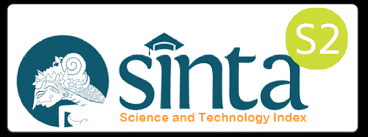Speech Delay in Toddlers: Encouraging Everyday Talking among Children
DOI:
https://doi.org/10.35730/jk.v15i1.1145Keywords:
speech delay, children, developmentAbstract
Background: Delays or failures in language development that occur in children are caused by several reasons including poor hearing, incomprehensible speech, speech deficits and striking language
Aims: The aim of this research is to explore the phenomenon of speech delays (Speech Delay) in toddler age children.
Method: The research method used in this study is a qualitative method. Population of 10 respondents with inclusion criteria: Children who experience speech delays (Speech Delay) after screening the child's KTSP Language observation sheet at the age of 24 months to 36 months. Does not include children with special needs such as Down syndrome, autism
Results: With in-depth interviews and the results obtained: children's difficulty in speaking, the emotional condition of children who experience speech delays, parenting patterns for children who experience speech delays and methods of stimulating children who experience speech delays. just the ends of words and limited vocabulary. Difficulty in responding to commands/instructions is illustrated by the situation where children, when given an order, just turn their heads, remain silent, don't understand and don't care. For this reason, there is a need for early detection in children with appropriate speech delay stimulation for children.References
Karim, S.et al.(2023) ‘Identification of Extremely Rare Pathogenic CNVs by Array CGH in Saudi Children with Developmental Delay, Congenital Malformations, and Intellectual Disability’, Children, 10(4). Available at: https://doi.org/10.3390/children10040662.
Lipkin, P.H. et al.(2020) ‘Promoting optimal development: Identifying infants and young children with developmental disorders through developmental surveillance and screening’, Pediatrics, 145(1). Available at: https://doi.org/10.1542/PEDS.2019-3449.
Mondal, N. et al.(2016) ‘Prevalence and risk factors of speech and language delay in children less than three years of age’, Journal of Comprehensive Pediatrics, 7(2), pp. 0–6. Available at: https://doi.org/10.17795/compreped-33173.
Rupert, J., Hughes, P. and Schoenherr, D. (2023) ‘Speech and Language Delay in Children’, American family physician, 108(2), pp. 181–188.
Hajesmaeel-Gohari, S.et al.(2023) ‘Digital games for rehabilitation of speech disorders: A scoping review’, Health Science Reports, 6(6), pp. 1–10. Available at: https://doi.org/10.1002/hsr2.1308.
Liu,L.et al.(2023) ‘Knowledge-Based Features for Speech Analysis and Classification: Pronunciation Diagnoses’, Electronics (Switzerland), 12(9), pp. 1–23. Available at: https://doi.org/10.3390/electronics12092055.
Psarommatis, I.M.et al.(2001) ‘Hearing loss in speech-language delayed children’, International Journal of Pediatric Otorhinolaryngology, 58(3), pp. 205–210. Available at: https://doi.org/10.1016/S0165-5876(01)00430-X.
Johansson, M. (2023)CHILDREN WITH CONGENITAL UNILATERAL SENSORINEURAL HEARING LOSS — ETIOLOGY , NEWBORN DIAGNOSTICS , AND HEARING AID AMPLIFICATION.
Helwig, N.E., Hong, S. and Hsiao-wecksler, E.T. (2023) ‘Facilitating Early Identification through Caregiver Report of Emerging Speech Patterns Using the Speech Sound Development Screener (SSDS’.
Spencer, L.M. (2023) ‘Investigating speech perception in children with dyslexia’.




